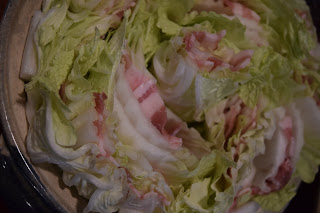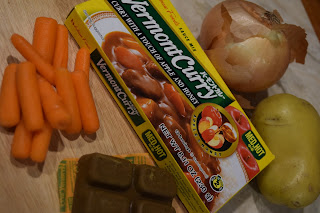So I always fancied to have my own nukazuke. As a Japanese, it is essential to have your pickles.
I wasn't appreciating it until I grew up a little. I mean I always loved grandma's home made pickles that she always did in the shack in front of our house with nails and eggplants. And my mom's
seasonal home grown veggies "asazuke pickles."
And of course, my dad's nukazuke that he seems he can't never ever get it right.
Yes, Nukazuke takes a lots more (?) efforts I guess.
It is like growing your own child, you have to take care of them and pamper them constantly.
Yet, the result of this method is very rewarding.
You will get perfectly healthy fermented and pickled veggies everyday if you succeed.
And since the day I found the Nukazuke kit from Nijiya, a Japanese market I always go to, I couldn't resist to try :)
What a fun project!!
So I bought this...
And it comes with,
1. Organic rice bran (containing soy sauce powder)
2. Salt
3. Kombu (dried kelp)
4. Red Chili pepper
and very much hands on and detailed instruction, yay!
I simply followed the instruction in order to make a rice bran bed for pickles, which is called "Nukadoko."
1. Prepare a salt water with the salt from the kit.
Then mix the salt water with the rice bran.
Before I can start actual pickling, I have to prepare
"the bed" in a way that is moist and ready for fermentation.
In order to do that, I had to add vegetable trimmings to the mixture. These vegetables replenish the nukadoko with nutrients and provide adequate moisture necessary for the fermentation process.
So I added daikon greens and cabbage for that, and finally added kelp and seeded red pepper that came with the kit.
So here comes the hard part! For the first week after the nukadoko is made, I have to stir it thoroughly from the bottom to the top twice daily, in the morning and the evening!
It says "after about a week of the initial preparation, start pickling vegetables in the nukadoko. Try to pickle everyday if possible, even by a small amount. The nukadoko will be futhre fermented, gradually improving the flavor and taste of your pickled vegetables."
It's been more than 10 days now. I have had a couple of nukazuke cucumbers and carrots!
They weren't that fragrant yet, and a little bit salty.
Just now, I embedded a daikon radish and a celery.
I know I can adjust it to my liking someday.
Cuz I DO see that this "bed" and I have a great and hopeful future together!
























































